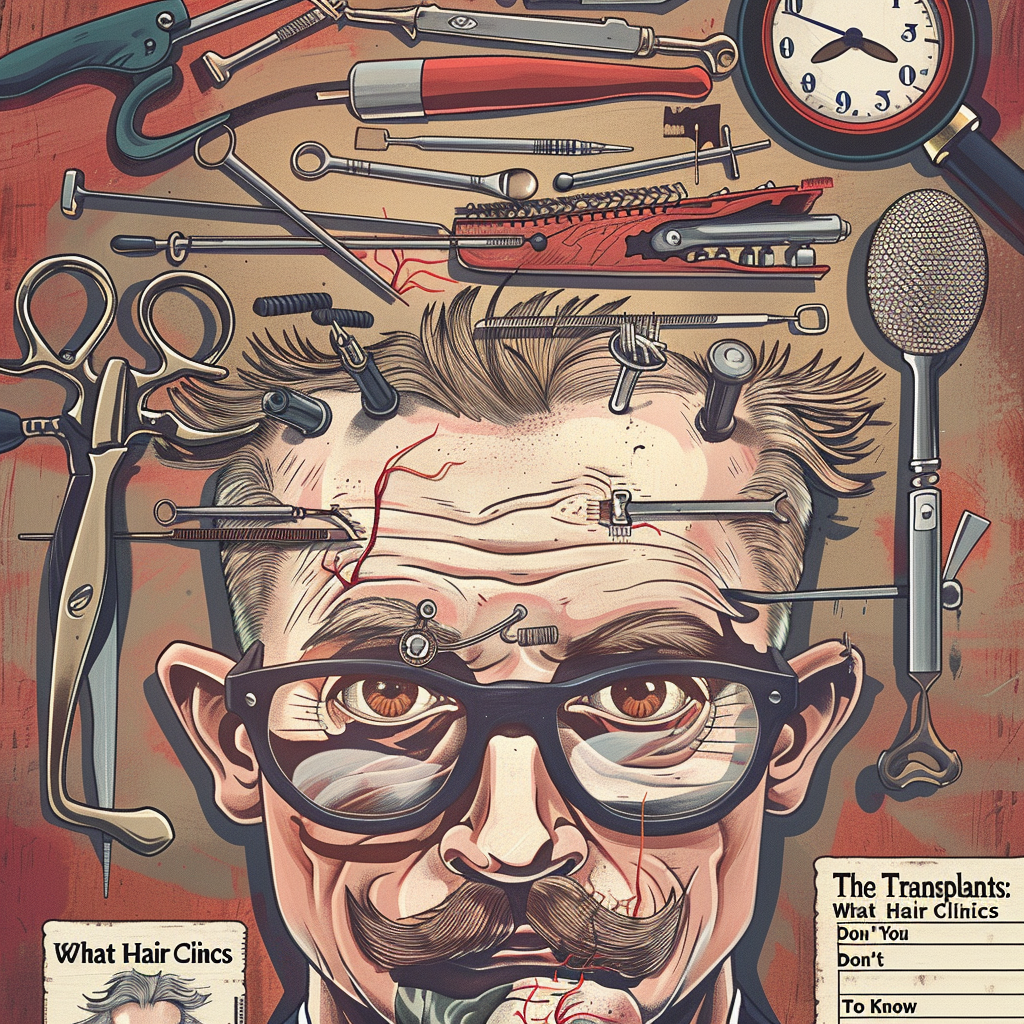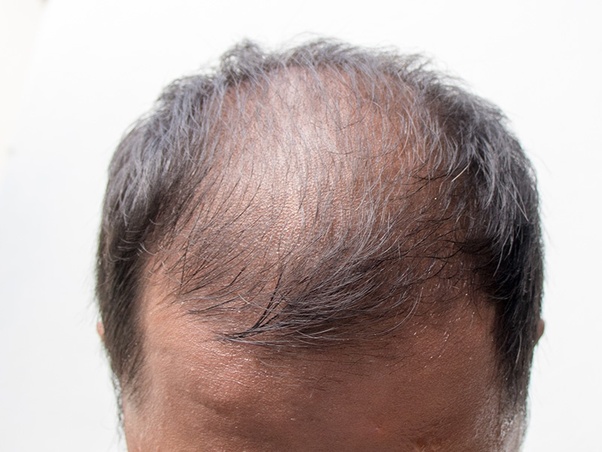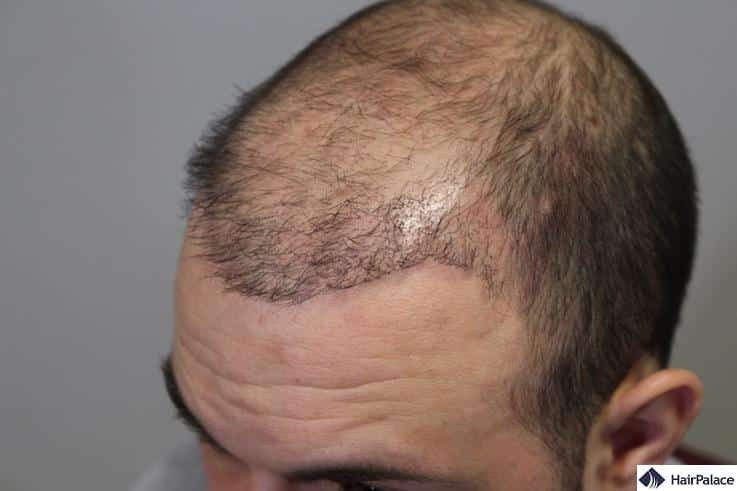
The Truth About Hair Transplants: What Hair Clinics Don't Want You To Know
In the world of hair restoration, the allure of a full head of hair can drive many to make hasty decisions, fueled by the desire to look their best and the fear of missing out. However, when it comes to hair transplants, there is much that goes undisclosed in the glossy brochures, persuasive sales pitches, and broken promises of many clinics. This article aims to peel back the veneer of the transplant industry to reveal some critical truths.
Understanding the Limitations of Hair Transplants
One of the most common misconceptions about hair transplants is that having enough donor hair is the sole criterion for a successful procedure. While significant, it’s just a piece of the puzzle. More critical metrics to consider are your age and your position on the Norwood scale, which measures the progression of male pattern baldness. The truth is only about 20% of people getting hair transplants are suitable candidates, the rest are left to pick up the pieces long after their failed promises.
The Importance of Understanding the Norwood Scale

If you are classified as a Norwood 4 or above, indicating a receding hairline and thinning at the crown (see image above and below), and are only in your 20’s or early 30’s, there’s a considerable risk of further hair loss. Opting for a transplant at this stage could mean you’ll face additional balding, leading to many issues to deal with from your transplant, being that you will most likely opt to shave your head in the future once additional shedding continues to occur. However, this leaves you with other issues such as scarring, an unnatural hairline, irregular skin, and potential bumps where the hair was transplanted. From our extensive research and seeing post-transplant clients for many years, if you are experiencing any more hair loss than the image below, you should not be considering getting a hair transplant.

Don't Listen to What the Hair Clinics Tell You
Many hair clinics will assert that as long as you possess sufficient donor hair, you are a viable candidate for a transplant. Unfortunately, this is misleading and overly simplistic advice. The true goal of any hair restoration process should be to restore the hair density and appearance that one had in their early 20s. If achieving this look is unlikely—particularly for those who are beyond a Norwood 4 in terms of hair loss—then pursuing a hair transplant may not be the best course of action.
The harsh reality is that even after undergoing a transplant, many of the transplanted hairs are likely to fall out over time. Furthermore, if you naturally have fine or thin hair, the outcome of a transplant may still leave your hair looking sparse and thin, which defeats the purpose of striving for a fuller head of hair. Many people are under the misconception that a transplant will miraculously restore their hair to its former glory, not realizing that the actual appearance of 4,000 grafts—often the upper limit in a single session—might not meet their expectations.
The visual density and coverage that 4,000 grafts can provide are often insufficient to replicate the fullness of a youthful hairline, especially in cases of advanced hair loss. If a transplant cannot realistically return your scalp to a complete or near-complete state of coverage, it might be wise to consider alternative treatments. In many instances, other options, such as Scalp Micropigmentation (SMP), can offer a more satisfactory and visually appealing solution without the risk of further hair loss and the disappointment of sparse results. This approach aligns more closely with the desired outcome of having a consistently fuller-looking head of hair.

In the image above, this client is a male who underwent a hair transplant one year ago, we see that all 3500 grafts were concentrated at the front section of his head. The photo starkly illustrates what 3500 grafts can actually deliver—a front-loaded density that still looks thin. Looking at this, I can’t help but think that walking around with such an uneven appearance and still perceived by anyone as a bald male.
The Issue of Hairline Design and Scarring With Transplants
One of the most significant challenges in hair transplant procedures is the difficulty in creating a natural-looking hairline. This complexity often arises because surgeons, aiming to increase the likelihood of graft survival, opt to place the thickest follicles at the forefront of the hairline. However, this strategy can backfire aesthetically. Natural hairlines typically begin with finer hairs, gradually thickening towards the back of the head. When transplant techniques do not replicate this natural gradation, the result can look conspicuously artificial, diminishing the overall appearance and the person’s satisfaction with the procedure.
Additionally, the choice between the two predominant transplant techniques—Follicular Unit Transplantation (FUT) and Follicular Unit Extraction (FUE)—brings its own set of complications. FUT, often known for its efficiency in covering large areas, unfortunately leaves a long and noticeable linear scar across the back of the scalp. This scar can be a significant cosmetic concern, especially for those who prefer shorter haircuts, as it is difficult to conceal without longer hair to cover it.
On the other hand, FUE, which is touted for its less invasive nature and ability to leave minimal scarring, does not entirely solve the problem. The technique involves extracting individual hair follicles and transplanting them to the thinning areas. While this method reduces the visibility of scarring compared to FUT, it often results in tiny, scattered white dot scars across the extraction site. These scars can become visible if the hair is cut very short, leading to a patchy and uneven appearance of the scalp.
From our extensive experience at our Scalp Micropigmentation (SMP) clinic, we often encounter clients who regret undergoing hair transplant procedures due to these high failure rates. The aftermath is usually a double burden: not only does the hair continue to thin, necessitating a potential buzz cut, but clients are also left to contend with a sparse, unnatural hairline and the problematic scarring from the surgery. This situation frequently exacerbates self-consciousness and dissatisfaction, as clients grapple with the visible reminders of a procedure that didn’t meet their expectations.
These outcomes highlight why a significant portion of our clients turn to SMP. Scalp Micropigmentation offers a non-invasive alternative that can artistically and effectively camouflage these issues, providing a customized, fuller-looking hairline without the concerns of ongoing hair loss or surgical scars. The technique’s adaptability and the precision with which it can recreate natural hairline patterns make it an increasingly popular and practical solution for those disillusioned by traditional hair transplant methods.
The Case for Scalp Micropigmentation (SMP)
Given the drawbacks of traditional hair transplants, SMP offers a compelling alternative. This method involves depositing pigment into the scalp to create the look of a full, youthful hairline. SMP is highly customizable, allowing for the adjustment of the hairline, thickness, and style to match each individual’s needs.
Should You Choose SMP Over Transplants?
Look, I understand that we all want the option to wear our hair long, as this is an ideal scenario, but your decision should not be based on what your ideal outcome is, but should be based on what your realistic outcome will be. Sometimes opting for a less ideal outcome like SMP, where you might have to keep your hair short, but it looks extremely full and making it look like you opted to buzz your hair, will work better than having long hair that looks thin, which defeats the purpose of a hair transplant. Have you ever seen a guy with thin hair and said, “Wow, that guy’s hair looks great”?
Scalp Micropigmentation (SMP) is not just climbing the ranks for its aesthetic benefits but also for its minimally invasive nature and virtually nonexistent recovery period. This makes it especially appealing for those who are past a Norwood 4 stage of hair loss or who are reluctant to undergo more invasive, surgical procedures. With SMP, the enhancements are visible immediately, there’s no significant downtime, and, crucially, no ongoing hair loss to manage. Choosing SMP can mean embracing a bold, confident style with a full, albeit shorter, hair look—providing a modern solution that aligns with realistic expectations rather than clinging to less effective traditional methods.
Real Stories, Real Regrets with Transplants
In contrast to the success stories often touted by hair transplant clinics, the reality can be less promising. Many men, after undergoing transplants, find themselves dissatisfied with the outcomes. Statistics from those in the SMP industry suggest that a significant majority of transplant recipients regret their decision within five years due to the unnatural look and maintenance difficulties.
Making an Informed Decision
Choosing between a hair transplant and SMP should be an informed decision based on a thorough understanding of the potential outcomes and your personal hair loss situation. It’s important to consult with professionals who are willing to discuss both the advantages and limitations of each procedure openly.
Conclusion
While hair transplants might seem like a perfect solution for hair loss, they come with limitations and risks that are often not discussed openly. For those experiencing significant hair loss, SMP offers a viable, less invasive alternative that can provide satisfaction and a more natural appearance. Remember, it’s essential to weigh the pros and cons and choose a path that aligns with your long-term appearance goals and lifestyle needs.
Ultimately, whether you choose a hair transplant or SMP, the goal is to make you feel confident and satisfied with your appearance. It’s not just about adding hair—it’s about adding happiness and confidence to your life. Choose wisely, and consider all factors thoroughly before taking the plunge.


